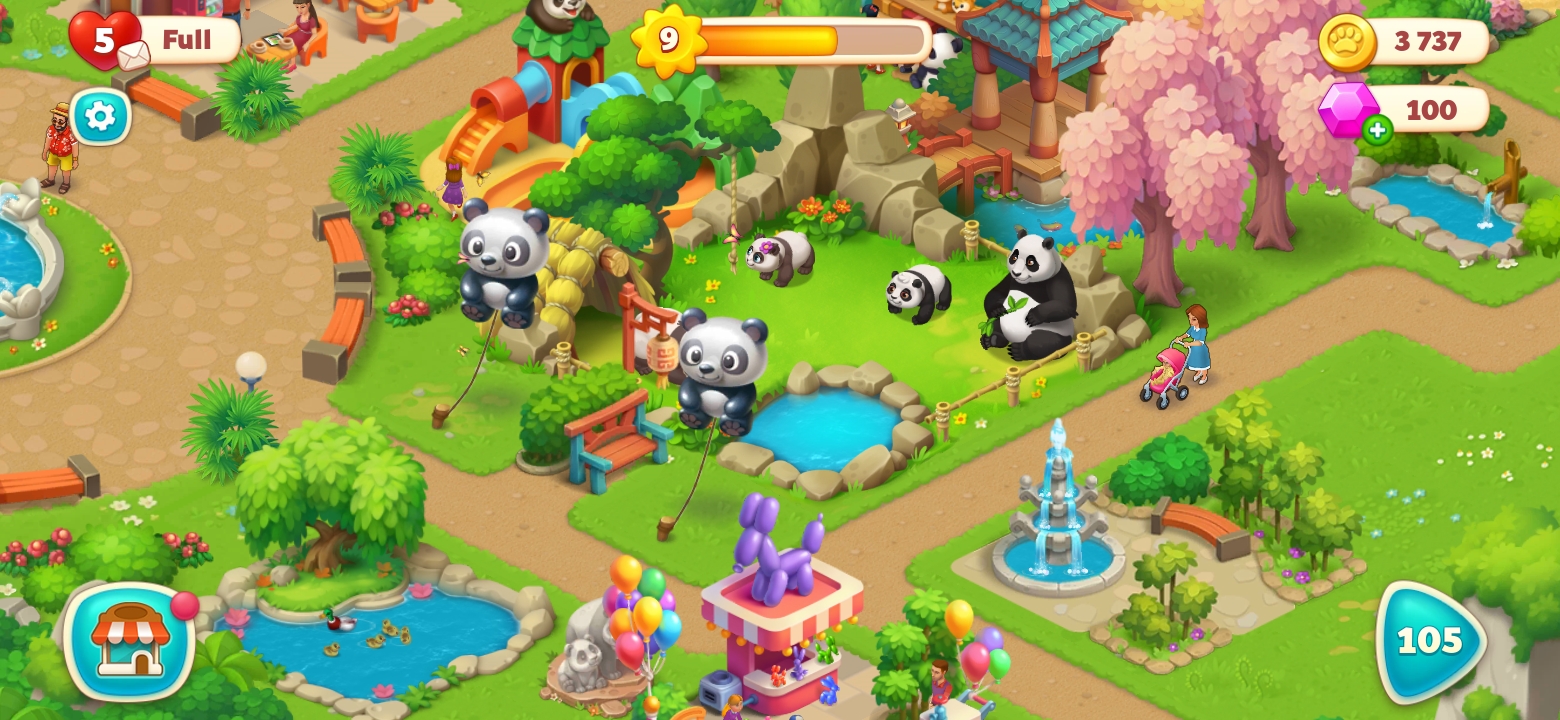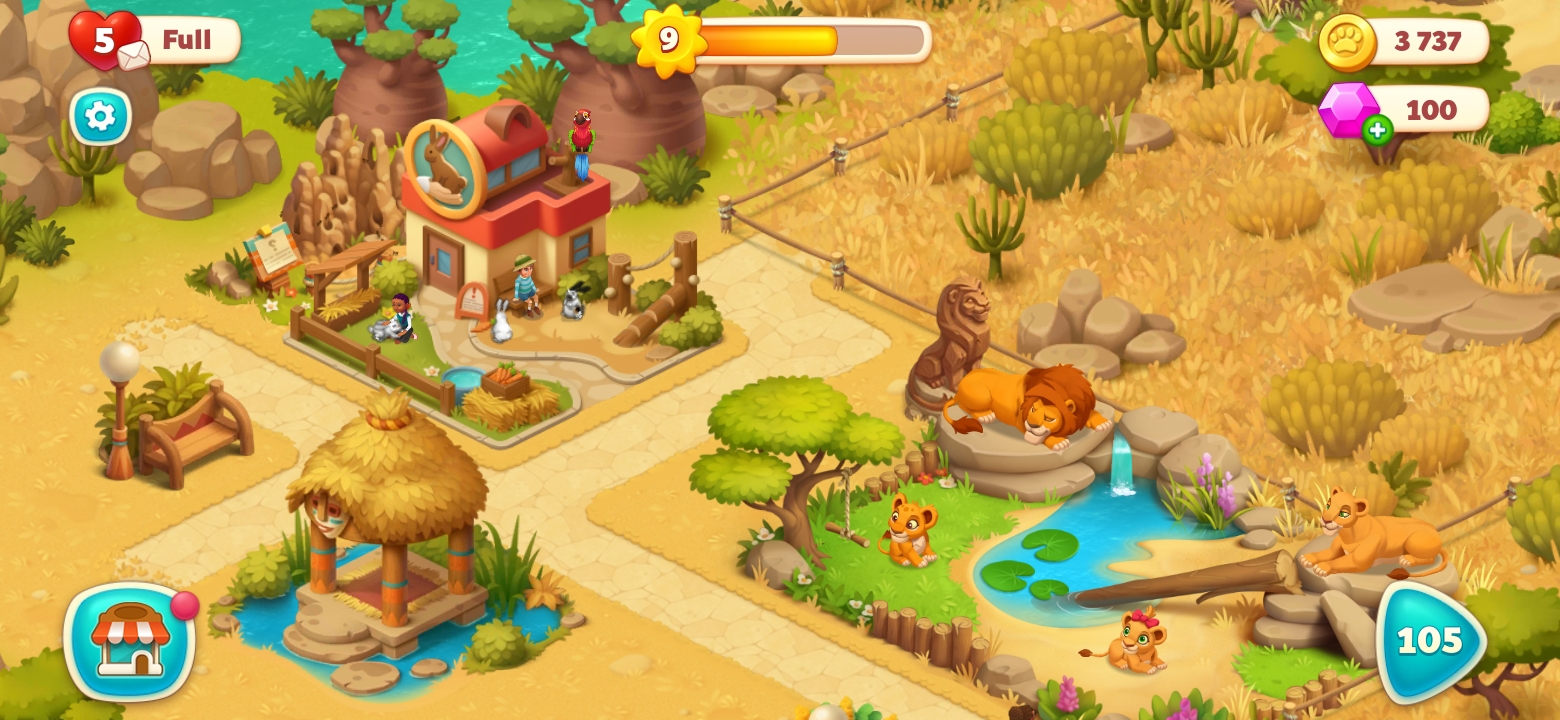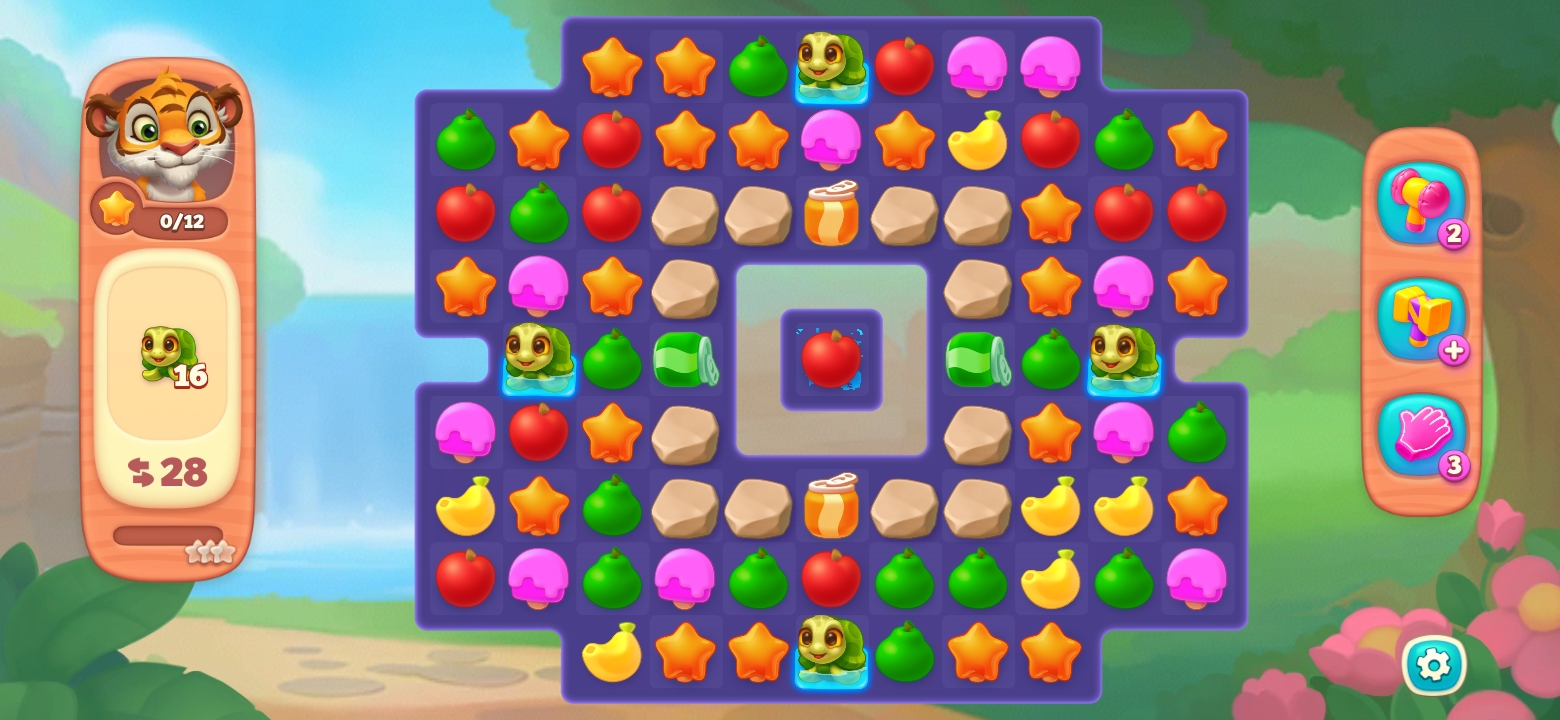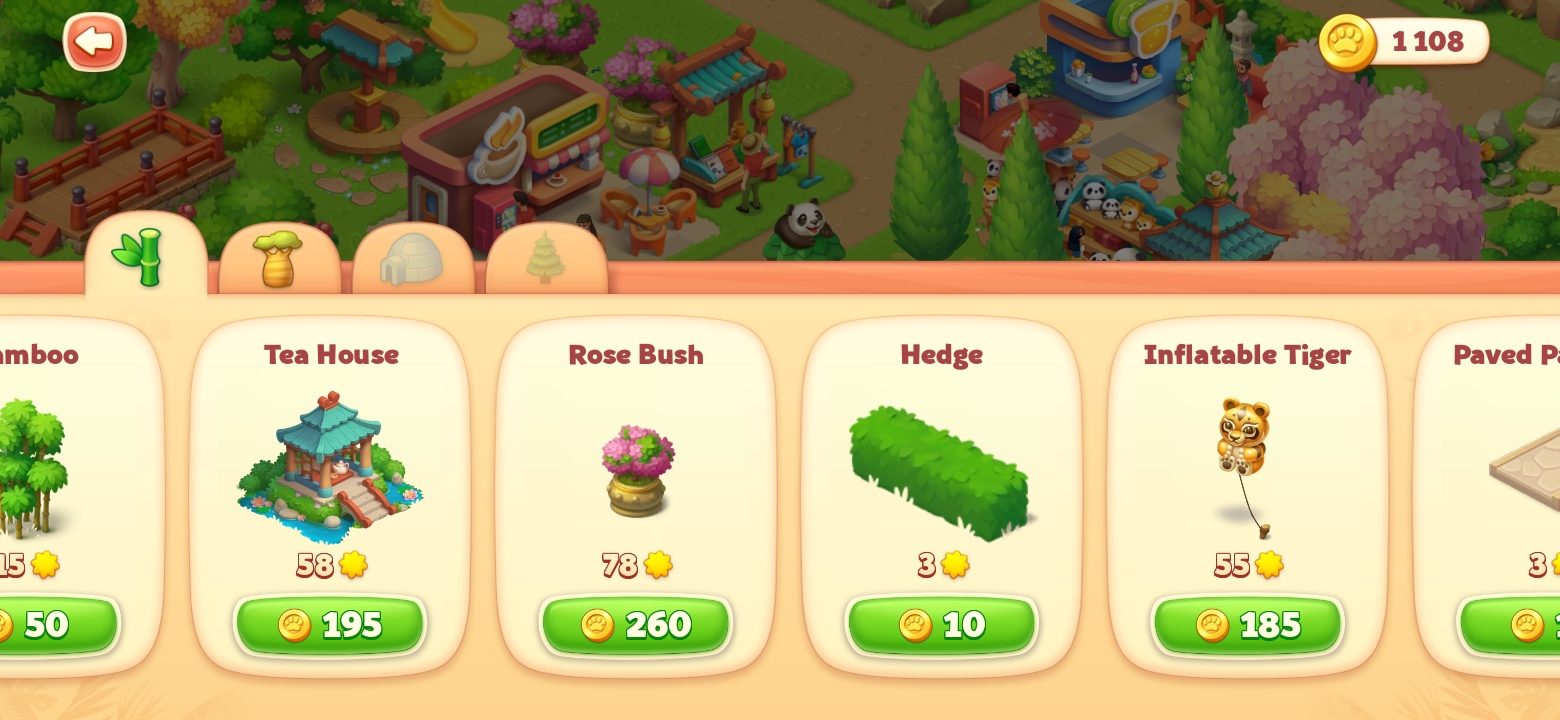"We don't notice the market fatigue from match-3": interview with Playrix about Wildscapes
On August 14, the launch of the new match-3 from Playrix — Wildscapes took place. We talked with Anton Chernyagov, who holds the position of General Manager at Playrix, about how the project was created and how it differs from the previous games in the series.
Alexander Semenov, Senior Editor App2Top.ru : Playrix today is a huge company, where probably a thousand people already work. The history of any game is the history of the team. And the question here is about the team. How do you usually form it for a new project, because no one has canceled the operation of previous games?

Anton Chernyagov
Anton Chernyagov, General Manager at Playrix: The history of the formation of each team is unique in its own way. Usually, at the start, we try to connect already experienced guys to new projects. This gives them a new perspective and points for growth. At the same time, veterans are freeing up areas of responsibility where someone else can prove themselves. But it also happens that we take newcomers immediately to a new project, especially if the experience and expertise correspond to the goals of the project.
In the future, we try to maintain a balance between new personnel and experienced guys from other projects. This allows you to simultaneously pump up the team, offering them new challenging tasks, and consistently achieve results.
Do I understand correctly that you have no practice when each new project is launched by the same core of specialists?
Chernyagov: Yes, there is no such practice. As mentioned above, throughout the life of the project, we maintain a balance between experienced specialists and newcomers.
We also always try to take into account the interests of employees. There are very different products in development now, and it happens that someone is interested in working on a particular genre or in a specific style. This is also taken into account when forming a team.
Zoo is not a new theme for Playrix. Previously, you did a large-scale location for the Township in the same setting. Was the setting of the novelty caused by this experience, or were there any other factors?
Chernyagov: Yes, the interest of the Township audience in the zoo was one of the factors that prompted us to consider this setting. But the theme of wild animals and parks itself is very interesting from a visual and narrative point of view, well suited for scaling. In Wildscapes, we managed to do not just a reskin of old projects, but to create a fairly fresh concept of a meta-game.
Another question about the setting. When I started studying the project, I had a clear impression that his art was prepared with the expectation of a Chinese audience. Is it so?
Chernyagov: No, we didn’t have a goal to adapt the project specifically for Asian users. We wanted to show very different animals from each other: elephants, pandas, peacocks and tigers. This opportunity was provided to us by the style of Asia. In a later game, we show the nature of other territories: the African savanna, the Arctic and America.
In addition, it seemed important to us to achieve a special atmosphere of rest, relaxation, even a holiday mood in the game. Belonging of the first area to the “warm countries” has helped to create that pleasant feeling of relaxation and exoticism, which is so lacking in everyday life.

By the way, GameRefinery recently shared its assessment of the Chinese market. They say they like to see animals in the form of match-3 elements there and don’t really like edibles. How do you feel about these conclusions and was there any temptation to try in the form of animal elements?
Chernyagov: The conclusions on the Chinese market are interesting, but it is difficult for me to comment on them, because we do not understand this. We create our products primarily for a global audience.
Despite the fact that our main chips are quite appetizing, we have not spared the animals either. As unique elements, we have rabbits, raccoons, ladybugs, ostriches, etc.
Go directly to the game. What is the difference between Wildscapes bark and Homescapes bark? Are there any fundamental changes?
Chernyagov: We still use the classic color bonus scheme, but in combination with the new mechanics. It’s called “Animal Helper Mechanics.” The player feeds the animals with chips, and they help in passing the levels by throwing bonuses on the field.
This is an important, but not a very big change. Is there any fear of audience fatigue from the usual gameplay?
Chernyagov: Just the new mechanics gives us the space to create original levels that are unlike the levels of our other games. New interesting levels, in turn, help to avoid audience fatigue. And in general, we do not notice the fatigue of the market from the classic match-3. For example, all our launched projects in this genre continue to grow, which means that the players like everything.
By the way, a few years ago you talked about the frequency of adding new elements. That a new element should be introduced almost every three levels, and then over time less and less. After level 180, the new mechanics should already go once every 40 levels. Is this concept relevant?
Chernyagov: In general, the approaches have not changed. In Wildscapes, we follow a similar pace of element input to other games. We may reveal specific figures and details at one of the upcoming conferences.
Now let’s talk about meta. Can you share how it works in the first approximation?
Chernyagov: A meta—game in Wildscapes is such a casual sandbox with elements of a bodybuilder. The concept is quite simple: with the coins earned in match-3, we buy animals and houses, increase the beauty index of the park, get access to new extensions (territories and pens). In other words, progress on match-3 levels opens access to new content. At the same time, we try not to overload users with complex economic interactions.

Conceptually, you’re back to the meta from Fishdom. Right?
Chernyagov: Here the comparison with Fishdom is understandable, but I would not call it completely correct. After all, there are no closed aquariums in Wildscapes, and in Fishdom, in turn, there is no construction component, which also affects the behavior of pedestrians. It is more correct to talk about structural similarities here, but Wildscapes creates a completely different gaming experience in a meta-game.
Why did they decide to abandon a more linear approach (Earlier in the games of the Scapes series, the player had no choice what to build and repair, in the novelty, he can place a wide range of buildings at his discretion. — Ed.)?
Chernyagov: It is impossible to name any reasons that would directly dictate to us such a direction of development of the project (abandoning the linear plot in favor of sandbox elements and more free quests). It’s just interesting to create a game with fresh sensations, at the same time — with an equally high degree of visual feedback on the player’s actions.
One of the most unexpected moments in the meta is the return of stars as rewards for the level (in the final of each Wildscapes level, the player is awarded from one to three stars, depending on the number of points collected. — Ed.). You traditionally cannot replay the level. However, there are stars that are just a tool that stimulates the passage. Is there a contradiction here?
Chernyagov: In Wildscapes, mechanics with stars still does not apply to meta. Unlike the same Homescapes, the stars are not connected with the progress in the meta-game in any way. The decision to add them to match-3 is rather dictated by the fact that in each project we are looking for moves that can give players a new experience, rather than doing endless self-copying.
In the case of Wildscapes, the mechanics with stars seemed interesting. Of course, we thought about the possible contradiction you mentioned, but, from our point of view, stars are an understandable indicator of the success of passing a level, and not a motivator for its passage.
By the way, since we have already started talking about the stars. How much does this lengthen/complicate the creation of levels, because it requires additional balancing?
Chernyagov: Here I will answer very briefly — it does not lengthen or complicate.
Another unexpected aspect of meta for match-3 from Playrix is the addition of hard currency. How much did this affect the metrics in percentage terms?
Chernyagov: The player receives hard currency for completing the tasks of visitors. It seems impossible (or, say, impractical) to assess the impact of such a decision on project metrics outside the context of all other decisions. After all, the game is a whole living organism. According to our current assessment, the system is working well and exactly as we expected, otherwise it would not have been included in the release of the game.

Have you completely abandoned the classic end-to-end story? Why?
Chernyagov: We found it interesting to give the user the experience of playing a casual sandbox, to create a new meta in this game. With a linear plot, this concept works rather inconsistently. The big challenge in the case of Wildscapes was to build a visual feedback (the behavior of questioners and visitors, animations, etc.) in order to get closer to the emotionality of a game with a linear plot in a sandbox game. It seems to us that a lot has been done in this direction, but at the same time we see extensive prospects for how all this can be developed and improved.
What principle now underlies the narrative of the game?
Chernyagov: Narrative is a broad concept and exists in almost any game. Depending on the genre and the specific game, the ways of presenting the narrative can be very different. There are several layers in Wildscapes.
The first, most noticeable layer of narrative in Wildscapes is built around the formalization of medium-term goals. As mentioned above, there is no linear plot in Wildscapes, but there is a chain of quests. Special visitors or new employees periodically arrive at the zoo. Each of these quest givers has its own character and its own little story. They turn to the player with requests, comment on his actions and show plot scenes with objects and animals.
The second, background layer is built around ordinary visitors, small animals and the general atmosphere of the park. Thanks to the animations of reactions, behavior tuning and other aspects, the atmosphere of the game is created, which also carries a narrative message.
The principles of constructing the narrative part are simple and are probably suitable for most casual titles:
- the whole narrative, from the texts in the dough to animations and window names, should create a pleasant atmosphere and support the theme of the game.
- the narrative part is good if it provides a positive emotional feedback on the player’s actions;
- the narrative should support and beat the basic mechanics and formalized goals, but not obscure them and even more so not contradict them.
From April to August, the game had a sotflonch. With what number of levels and content did you go to it?
Chernyagov: In April, we released a version with 220 levels and 2 areas — Asia and Savannah. Now the game has 2 times more content. New levels will appear weekly, and we plan to release new areas during updates.

Considering that you are exiting it, it ended successfully. At the same time, you officially reported that the retention of the first day is 38%. This surprised many, because a number of producers have been saying for years that they do not look at projects where the retention is below 40%. The question is, is the high retention of the first day so important for the success of the game?
Chernyagov: According to the figure that we provided earlier, it is impossible to draw unambiguous conclusions. By itself, retention without understanding what traffic is being evaluated does not make sense. In this case, we did not specify this information. For the audience on which the test was conducted, retention of 38% was a good result.
Moreover, Wildscapes now shows higher retention rates than our other match-3s. Here, however, it is worth considering the factors of the new game and the increased loyalty of the first users, so everything can still change.
If we talk in general about the assessment of the success of the game on the softlonch, then, of course, the retention of the first day is a critical indicator. You just need to be careful in your conclusions on his assessment.
The last question is about traffic. At the time of the launch, you were testing ads from AdMob and UnityAds. Are you planning to use someone else on the release? For example, Instargam?
Chernyagov: Instagram Facebook (and Instagram as part of it), Google, RTB, Network, and other channels are traditionally interacted with by all the largest advertising platforms in the world. When we start the paid promotion of Wildscapes, we plan to attract players using all available opportunities.
Thanks for the interview!
Also on the topic: